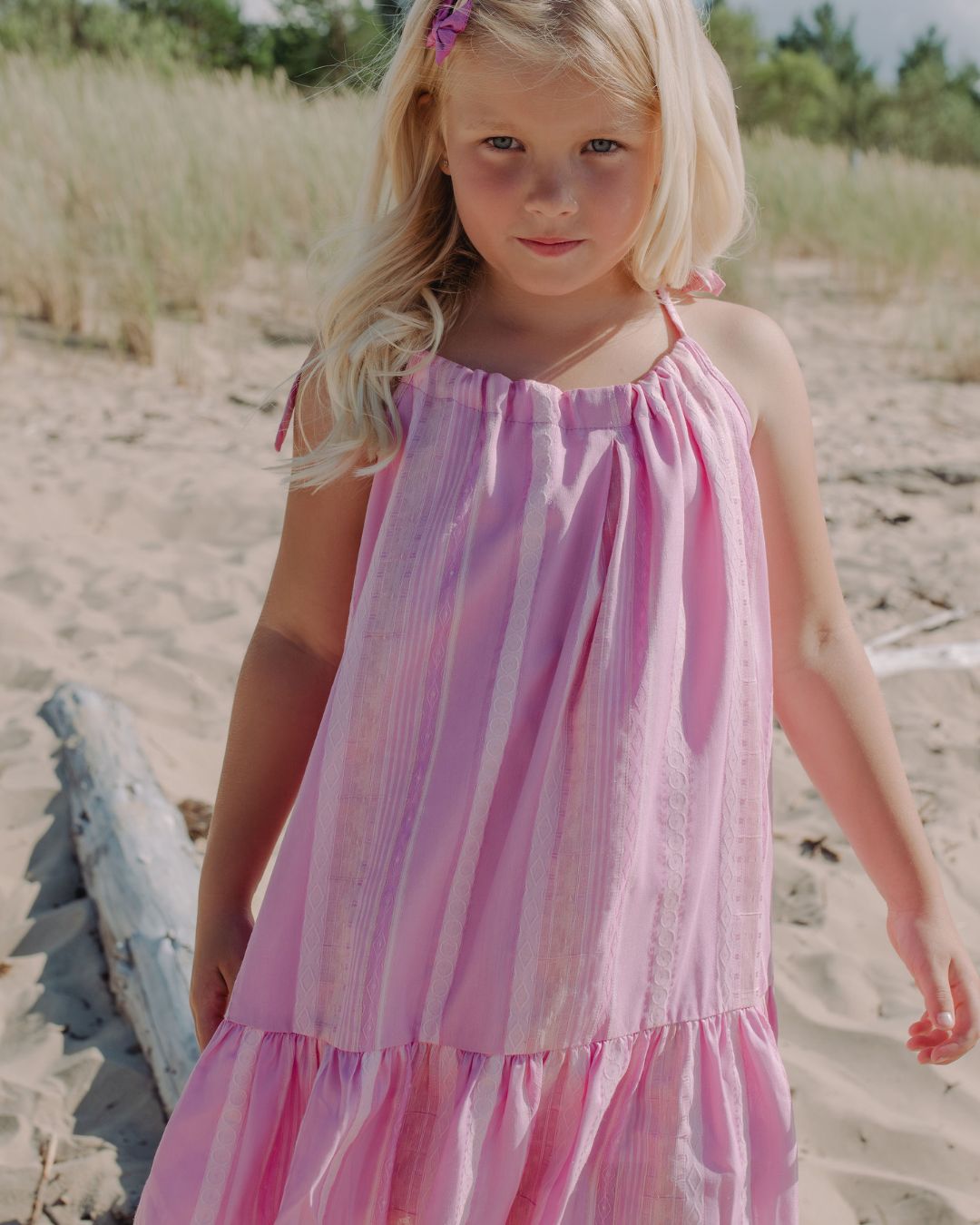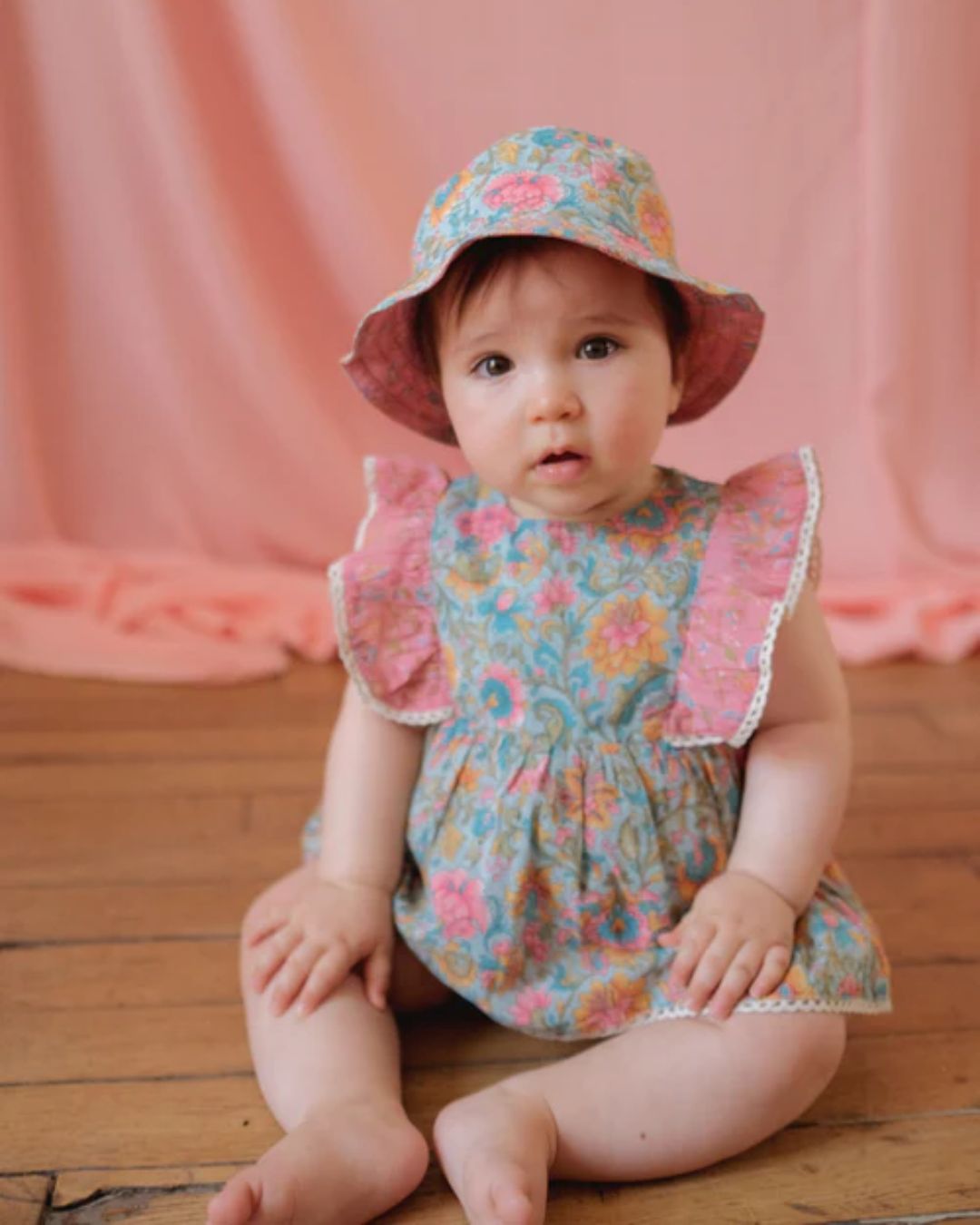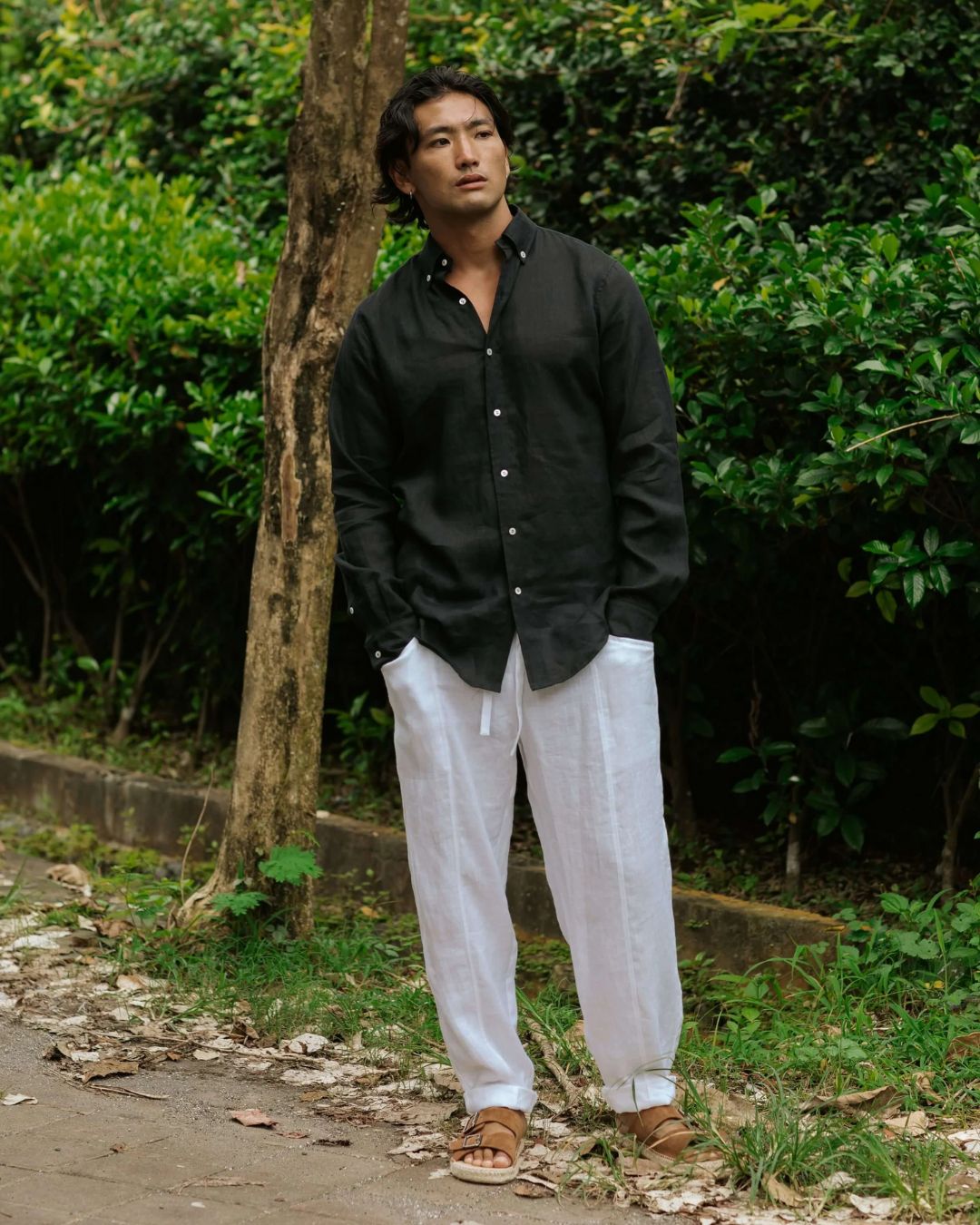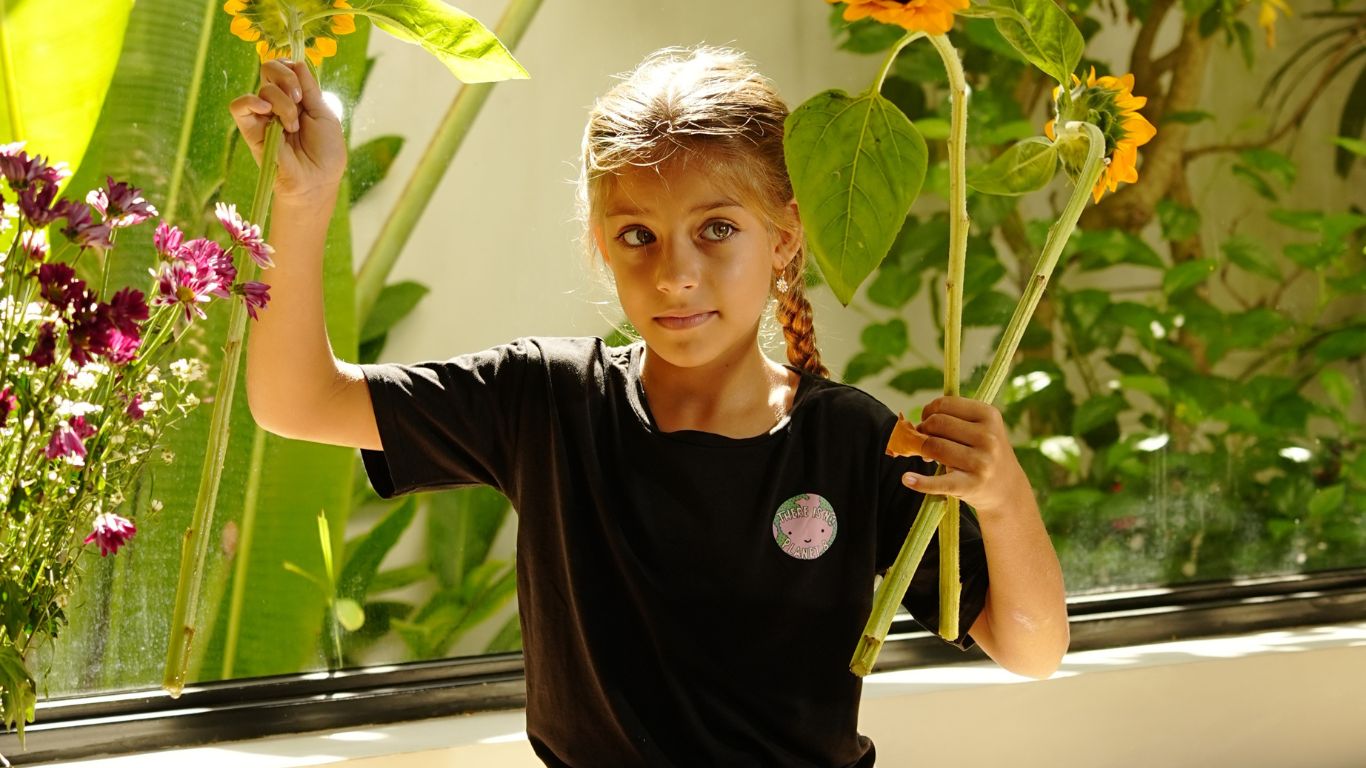Are Natural Fabrics Really Better? (Why Smart Shoppers Are Wearing Them)

For thousands of years, sustainable materials and organic fabrics have protected families with their breathable, skin-friendly, and sustainable qualities. Long before the rise of synthetic materials like polyester and nylon, our ancestors trusted these time-tested textiles for comfort and durability.
Today, with growing awareness of health and climate concerns, more parents are making the switch back to eco-friendly clothing made from natural fibre fabric—and it's easy to see why.
Natural fabrics—like organic cotton fibre, organic linen, silk fabric, and hemp fabric—offer a powerful combination of:
- Comfort: Gentle on sensitive skin and highly breathable for all seasons.
- Safety: Free from harsh chemicals found in many synthetic alternatives.
- Sustainability: Made from renewable resources and biodegradable, reducing environmental impact and textile waste.
For modern families who value both well-being and sustainability, choosing natural materials isn't just a trend—it's a smart, responsible decision that supports sustainable agriculture and green manufacturing practices.

Plant-Based vs. Animal-Based Fibres: A Guide to Natural Fabrics
When choosing sustainable fashion materials for your family, understanding the difference between plant-based and animal-based fibres is essential.
Plant-Based Fibers
Natural fibres come from two main sources: plants and animals.
- Plant fibres: Cotton (from plant seeds), linen (from flax stems), and hemp (from fibrous stalks) are the most common. Other examples include ramie fabric and banana fibre.
- Animal-based fibres: These include natural wool (from sheep), silk fibres (from silkworms), and luxurious cashmere fabric (from goats). Alpaca wool and merino wool are other popular choices.
The key difference? Plant fibres are made of cellulose, giving them strength and breathability—ideal for energetic kids. Animal fibers contain proteins like keratin, making them naturally warm, elastic, and protective.
Natural vs. Synthetic Fabrics: What's the Real Difference?
For eco-conscious families, the fabric origin matters. Here's a breakdown of how sustainable fabrics compare to synthetic alternatives like polyester and nylon:
|
Feature |
Natural Fibers |
Synthetic Fibers |
|
Source |
Renewable (plants or animals) |
Petroleum-based chemicals |
|
Feel |
Soft, breathable, skin-friendly |
Often rough or stuffy |
|
Decomposition |
Biodegradable (wool: 3–4 months) |
Non-biodegradable (polyester: 500+ years) |
|
Environmental Impact |
Lower chemical use, no microplastics |
Releases microplastics when washed |
 Why Smart Shoppers (Especially Parents) Are Making the Switch
Why Smart Shoppers (Especially Parents) Are Making the Switch
While sustainable materials are more environmentally friendly, it's important to choose responsibly. For example, conventional cotton consuming up to 2,700 liters for a single t-shirt. 2,700 liters of water for one T-shirt. That's why organic cotton, bamboo clothing, and hemp textiles are increasingly popular among families looking for eco-friendly fashion alternatives that support sustainable agriculture.
More families are choosing natural fibre clothing for their babies and children, and the stats say it all:
- 71% of consumers are willing to spend more on clothes made from natural materials.
- 72% of shoppers actively seek out garments made with natural fibres when shopping.
Why the Shift Toward Natural Fabrics?
✅ Safe for sensitive skin – Natural fabrics like organic cotton, bamboo linen, and organic linen are gentle, breathable, and free from harmful chemicals—perfect for little ones.
✅ Comfort that lasts all day – These fabrics offer softness and breathability that synthetic materials often can't match.
✅ Eco-friendly parenting – Choosing plant-based and animal-based natural fibres helps reduce microplastic pollution and supports a healthier planet for future generations.
By making the switch to sustainable, chemical-free clothing, conscious parents are creating a safer, more comfortable world for their kids—one outfit at a time.

Why Natural Fabrics Make a Real Difference for Your Family
5 Powerful Benefits of Natural Fibers Every Family Should KnowEver slipped into your favorite soft cotton T-shirt and thought, "This just feels right"? That's the everyday magic of sustainable fashion materials—and for families, it's more than just comfort. These eco-friendly fabrics offer real, lasting benefits for your health, your wardrobe, and the planet.
1. Natural Fabrics Let Your Skin Breathe
Synthetic clothes can trap sweat and feel stuffy, especially in warm or humid climates. But natural fibre like organic cotton fibre and bamboo absorb moisture and allow airflow, keeping your body cool and dry. In fact:
- Cotton can absorb up to 27 times its own weight in water,
- Bamboo absorbs 3x more moisture than cotton Perfect for active kids and parents living in places like Hong Kong, Singapore, or Australia.
2. Ideal for Sensitive Skin and Allergy-Prone Kids
If your child suffers from skin irritation or eczema, choosing organic fabrics like organic cotton, organic linen, or bamboo clothing can make a huge difference. These chemical-free fabrics are gentle, hypoallergenic, and reduce the risk of rashes or flare-ups—making them a go-to for families who care about skin-safe fashion.
3. They Last Longer—and Age Beautifully
Unlike synthetic clothing that fades or pills, sustainable fabrics like hemp fabric and organic linen become stronger and softer over time. Linen actually strengthens when wet, while hemp keeps its shape for years. Natural clothes don't just wear well—they wear better with age, making them a durable fabric choice for your family.
4. Naturally hypoallergenic
Did you know bamboo has natural antibacterial properties? Many natural fabrics possess inherent hypoallergenic properties that make them excellent for allergy sufferers. Bamboo contains a natural bio-agent called 'bamboo kun' that significantly reduces bacterial growth by almost 75% within 24 hours compared to cotton. Likewise, both silk and linen resist dust mites and other common allergens, making them perfect choices for kids' clothing, especially for children with allergies or eczema.
5. Everyday Softness That Improves Over Time
From the first touch to the hundredth wash, sustainable materials offer that lived-in softness that synthetic fibres can't replicate.
- Cotton becomes buttery soft
- Linen evolves from crisp to cosy
- Natural wool is now available in ultra-fine fibres, gentle enough for babies

Our Planet Needs Our Love—And Natural Fabrics Make a Difference
When we dress our children each morning, we're not just choosing what they'll wear for the day—we're making small decisions that shape the future of our planet. Sustainable fabrics offer a powerful way to care not only for our families but also for the environment they'll grow up in. Here's how:
1. Natural Fabrics Biodegrade—and Leave No Trace
Unlike synthetic clothing (like polyester or nylon), natural fibres return safely to the earth.
- Cotton biodegrades in 1–5 months Cotton biodegrades in just 1-5 months
- Linen can break down in just two weeks
- Hemp decomposes in around 3 months Compare that to polyester, which can take 20–200 years to decompose. Choosing biodegradable fabrics means we're not leaving generations of waste behind for our children.
2. Less Water. Less Waste. More Sustainability.
Natural fabrics like organic linen and hemp fabric require significantly less water consumption to grow:
- Linen often grows using only rainwater, no irrigation
- Hemp improves soil health naturally without fertilizers By contrast, conventional cotton farming uses up to 1,931 liters of irrigation water + 6,003 liters of rainwater for just 1 kilogram of fabric. That's a huge carbon footprint for something we wear every day.
3. No Microplastics from Natural Clothing
One crucial advantage of organic cotton and other natural materials is their freedom from microplastic pollution. When synthetic clothes are washed, they release tiny plastic particles—microfibres—that eventually reach our oceans. A single laundry load of polyester clothes can discharge 700,000 microplastic fibers. Consequently, textile washing contributes approximately 9% of annual microplastic losses to oceans.
Natural fabrics like organic cotton, bamboo, and organic linen shed fibers that biodegrade safely—no microplastics, no toxic buildup. This makes a huge difference in kids' clothing, which gets washed often.
4. Some Natural Fabrics Go Beyond Sustainability
- Hemp fabric absorbs carbon, grows rapidly without pesticides, and restores the soil
- Bamboo absorbs 5x more CO₂ and releases 35% more oxygen than trees
- Organic cotton (GOTS-certified) avoids harmful pesticides used in conventional cotton farming, which accounts for 16% of global pesticide use on only 2.5% of land
These are the kind of materials that truly give back to the planet and support sustainable agriculture.
5. Choosing Natural Fabrics Supports Ethical Fashion
Sustainable fashion isn't just about the environment—it's about people, too. When we choose ethically made, certified fabrics, we're helping ensure fair wages, safe working conditions, and responsible farming practices.
In places like Hong Kong, Singapore, and Australia, families are increasingly choosing eco-conscious clothing that supports both planet and people. Each purchase becomes a vote for a cleaner, more compassionate future and contributes to the circular economy.

Small Choices, Big Impact
From reducing microplastic pollution to supporting ethical manufacturing, natural fabrics are a simple but powerful step toward a better world. When we choose sustainable, biodegradable materials for our families, we're helping shape a future that's cleaner, safer, and more just—starting with the clothes on our backs.
How to Choose and Shop for Natural Fabrics
Shopping for sustainable fashion materials doesn't have to be overwhelming. With the right approach, it becomes an enjoyable part of your journey toward slow fashion—and it helps you protect your family and the planet at the same time.
Here are some practical, parent-approved tips on how to identify, choose, and buy genuine natural fabrics.
Always Check Clothing Labels for 100% Natural Fiber Content
First, examine clothing tags carefully. Authentic natural fabrics will clearly state "100% cotton," "100% linen," or similar content information. Be cautious of blends—even 5% synthetic content can significantly alter a fabric's properties and biodegradability. Occasionally, tags hide in side seams or hemlines rather than at the neckline, so check thoroughly.
For items lacking labels, consider the fabric burn test. Natural fibers like cotton smell like burning paper when ignited and leave gray ash, whereas synthetic materials melt or shrink away from flames.
💡 Pro Tip: Sometimes tags are hidden in seams or hems. Be patient—it's worth the search!
If you're buying vintage clothing or items without tags, try a fabric burn test:
- Natural fibers (cotton, linen) smell like paper and leave gray ash
- Synthetic fabrics melt or curl and often smell like burning plastic
Start with These Trusted Natural Fabrics
If you're just beginning your switch to environmentally friendly clothing, start with these:
- Organic Cotton – Ideal for daily wear and perfect for children's clothing due to its softness and breathability
- Organic Linen – Naturally moisture-wicking, cooling, and incredibly durable. Great for warm climates and layering
- Hemp Fabric – Strong, antibacterial, and requires minimal water or pesticides to grow. A champion among sustainable fabrics
- Bamboo Fabric – Known for its softness and thermoregulation properties
These fibers are not only healthier for your skin—they also have a noticeably different texture from synthetic fibers like polyester or acrylic. The more you wear natural textiles, the more intuitive it becomes to spot them by look and feel.
Look for GOTS or OEKO-TEX Certifications
Want real peace of mind? Look for eco-textile certifications that guarantee sustainability and safety.
✅ GOTS (Global Organic Textile Standard) ensures your clothing contains at least 95% certified organic fibers, is free from harmful dyes, and is made under ethical labor practices
✅ OEKO-TEX Standard 100 guarantees that the fabric has been tested for over 100 toxic chemicals, making it safer for you and your children
These labels are especially important when buying bamboo clothing and other newer natural materials, which can sometimes be processed in ways that negate their eco benefits. They also help ensure compliance with organic standards and the National Organic Program guidelines.
Shop Circular Fashion with Sustainable Brands
There's something incredibly rewarding about giving clothes a second life. Some of my favorite natural fabric finds have come from pre-loved pieces—often made with better quality materials than what's found in fast fashion today.
Instead of traditional secondhand shopping, explore circular fashion platforms like Retakle, which carefully curate collections made from sustainable fashion materials like linen, organic cotton, or hemp. This approach supports the circular economy and helps reduce textile waste.
Pro Tip: Look beyond just clothing—home textiles like bedsheets or kitchen linens often come in pure cotton or flax linen, and can even be repurposed into DIY pieces or everyday wear.
If you're shopping new, choose sustainable fashion brands that focus exclusively on natural materials. These labels often highlight their use of:
- Certified organic textiles
- Transparent supply chains
- Low-impact dyeing processes, including waterless dyeing techniques
Whether you're discovering gently used gems on Retakle or supporting a responsible brand, both options support a healthier fashion future. Consider building a capsule wardrobe with versatile, high-quality natural fabric pieces for a more sustainable approach to fashion.

Making Choices That Matter for Our Families
What have we discovered about natural fabrics on this journey together? These timeless materials offer so much more than just clothing - they represent a way of caring for ourselves, our children, and our planet. Organic cotton, organic linen clothing, bamboo clothing, and other natural options aren't just fashion choices; they're conscious decisions that align with our values and support sustainable agriculture.
Think about it - your body deserves fabrics that work with your skin, not against it. Natural materials breathe alongside you, manage moisture naturally, and actually become more comfortable over time. For those of us with sensitive skin or children who struggle with allergies, these fabrics offer gentle relief that synthetic materials simply can't provide. This is especially important when we're choosing kids' clothing for our little ones.
The environmental story tells itself, doesn't it? While synthetic materials add to microplastic pollution and take centuries to break down, natural fibres return to the earth gracefully. For families in Hong Kong and other climate-conscious communities, this sustainability factor resonates deeply with our hopes for our children's future and our efforts to reduce carbon emissions.
Yes, natural fabrics might cost more upfront... but here's what I've learned: they last longer, develop beautiful character with age, and prove more economical over time. The strength of hemp, the softening of cotton with each wash, the timeless appeal of linen - these materials have dressed families for thousands of years for good reason.
Starting your natural fabric journey doesn't have to be overwhelming. Maybe begin with everyday basics in organic cotton for your family, add some breathable organic linen clothing for those hot summer days, or explore bamboo clothing for active wear. Small steps lead to meaningful changes, and you'll notice the difference in comfort while supporting more sustainable production practices and green manufacturing.
We believe that our clothing choices reflect our values - our care for our families' health, our love for the environment, and our commitment to making thoughtful decisions. Natural fabrics offer us a practical way to live these values every day, one garment at a time.
Your family deserves comfort, quality, and conscience in every choice you make!
 FAQs
FAQs
Q1. Are natural fabrics more comfortable than synthetic ones? Natural fabrics like cotton, linen, and bamboo are generally more comfortable due to their breathability and moisture-wicking properties. They allow better air circulation and can absorb moisture, keeping you cool and dry, especially in warm climates. These breathable fabrics are also temperature regulating, making them ideal for all seasons.
Q2. How do natural fabrics impact the environment? Natural fabrics have a lower environmental impact compared to synthetics. They are biodegradable, don't contribute to microplastic pollution, and often require fewer chemicals in production. For instance, cotton biodegrades in 1-5 months, while polyester can take up to 200 years. They also contribute to reducing carbon emissions in the textile industry. Some of the most sustainable fabrics, like organic hemp and Tencel lyocell, even have regenerative properties for the soil.
Q3. Are natural fabrics more durable than synthetic ones? Contrary to some beliefs, high-quality natural fabrics can be very durable. Hemp is one of the strongest natural fibers, and linen becomes stronger when wet. While they may require more care, natural fabrics often last longer and improve in texture over time. Proper fabric care can significantly extend the life of these materials.
Q4. How can I identify genuine natural fabrics when shopping? Check clothing labels for "100% cotton," "100% linen," or similar. Look for certifications like GOTS, OEKO-TEX Standard 100, or OCS certification. You can also feel the fabric - natural fibers often have a distinct texture compared to synthetics. When in doubt, consider the burn test for unlabeled items. Sustainable sourcing information on the brand's website can also provide clues about the fabric's origin.
Q5. Are natural fabrics better for sensitive skin? Yes, natural fabrics are often better for sensitive skin. They're typically hypoallergenic and free from harsh chemicals used in synthetic fabric production. Organic cotton and linen are particularly gentle on the skin, making them good choices for those with allergies or skin sensitivities. Some natural fabrics even offer UV protection, adding an extra layer of skin care.











Comments